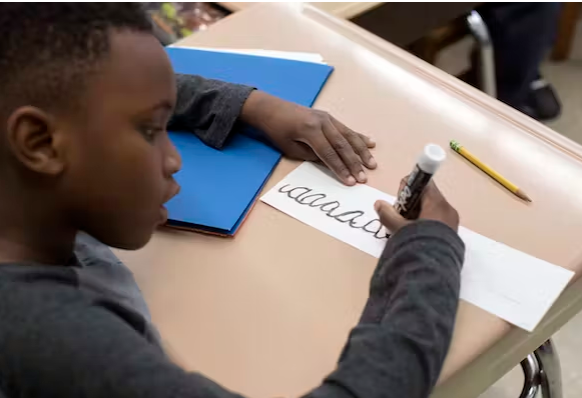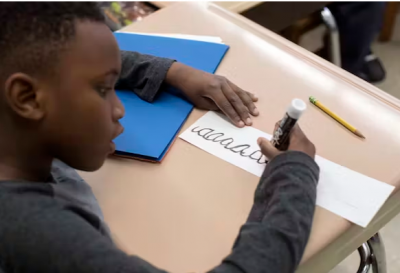"Nothing new lasts because the old is more enduring," is a phrase that regains its charm through the announcement from schools in Ontario, Canada, of the triumph of pen and paper over the keyboard. Experts emphasize that handwriting and the exercise of fingers to connect letters are essential for the growth of nerves and mental connections that organize and refine a child's thoughts.
An article by educational researcher Jo Aditonji in the UK, published in "The Conversation," states that "handwriting is a learned skill that should be taught through direct, explicit, and consistent instruction, away from incidental exhibitions. Its return depends on several summarized points: 'For many, the return of mandatory handwriting instruction in the Ontario curriculum, starting from grade three, is a long-awaited welcome step from the Ministry of Education. It reaffirms direct guidance in foundational skills. It is not an end in itself but a means to an end. It is not about the effects of display and aesthetics on the page. Rather, it is a powerful tool that gives the child an increased sense of confidence, pride, and effectiveness that their ideas matter.'"
Jo reviews what educational researcher Steve Graham, an expert on how writing supports reading and learning, has concluded, which aligns with her research supporting handwriting: "Steve has spent his academic life studying children's handwriting. He found that readable text, fluency, and speed significantly contribute to text quality. In a study he conducted with 245 fourth-grade students, it was revealed that 50% of these students' handwriting was below the adequate level to express their ideas on paper. Research indicates that this can hinder their academic success as the demands for literacy increase over time, starting from fourth grade. For young learners, handwriting is a complex and demanding skill that involves integrating and mobilizing a set of motor, spatial, visual, and cognitive skills."
The researcher links handwriting to the development of research in neuroscience and cognitive sciences, which confirms its importance in relation to reading learning and as a cognitive tool. She states: "Researchers Daniel J. Plumb and Karen H. James, experts in psychology and brain sciences, used functional magnetic resonance imaging to study brain activity. They found that there is a significant ability to recognize symbols among those who practice handwriting rather than using a keyboard." She adds, "Taking notes by hand improves students' ability to remember and retrieve information, giving them a processing advantage. Handwriting also shapes the brain's neural circuits for meaning formation, information storage, and retrieval."
### The Marginalization of Handwriting
Jo affirms that young students write faster and produce higher-quality text when writing by hand compared to using a keyboard: "Handwriting has long been marginalized in school curricula, often viewed as just an outdated skill. Handwriting has become complicated due to keyboard use and digital literacy related to '21st-century' learning goals, alongside the shift to teaching 'whole language teaching' which emphasized context and meaning-making, often at the expense of the foundational skills needed to achieve that. However, in a study from the United States, few teachers reported that they were willing to teach handwriting. My own research with second-grade teachers found that many were unaware of how important direct, sustained instruction is for children's learning pathways."
Jo points out that Graham proposed a set of ideas to return to handwriting, including that text should be clean and easy, which facilitates the transition from visual memory to motor skills, leading to composite letter writing. She notes the lack of insight and educational knowledge among many early childhood teachers in teaching early reading and writing skills to young learners. The article states: "Pre-service teacher education programs in colleges and universities may not sufficiently focus on teaching early reading and writing skills, neglecting teachers' professional development needs. The foundations of handwriting are best learned in early childhood, with emergent writing reflecting their understanding of print as symbolic marks and early movement to draw shapes. These understandings and skills greatly predict later success in developing handwriting literacy."
She concludes: "While the value of handwriting has been downplayed and misunderstood for many years, there is a compelling case for its return to the curriculum. Can we get it right this time?"




